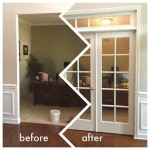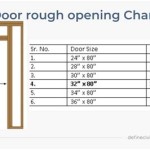Interior Architecture Jobs in Miami: A Thriving Market
Miami, Florida, presents a compelling landscape for interior architecture professionals. The city's unique blend of cultures, coupled with its rapid economic growth and burgeoning real estate market, creates a robust demand for skilled interior architects. From luxurious residential projects to innovative commercial spaces and hospitality environments, Miami offers a diverse range of opportunities for those seeking to advance their careers in this field.
The demand for interior architecture jobs in Miami is fueled by several factors. The city's continuous influx of residents, both domestic and international, drives the need for new housing and renovations of existing properties. Furthermore, Miami's status as a global hub for tourism and business necessitates the creation of sophisticated and functional spaces for hotels, restaurants, offices, and retail establishments. The city's commitment to modern design and sustainable practices further contributes to the demand for innovative and forward-thinking interior architecture solutions.
This article explores the current state of the interior architecture job market in Miami, highlighting key areas of demand, essential skills required for success, and strategies for navigating the job search process. It aims to provide aspiring and experienced interior architects with valuable insights into maximizing their career prospects in this dynamic and competitive market.
Areas of High Demand in Miami's Interior Architecture Sector
Specific sectors within Miami's economy are currently experiencing particularly high demand for interior architecture services. Understanding these areas can help professionals tailor their skills and focus their job search efforts.
The residential sector remains a strong driver of demand. The construction of luxury condominiums, single-family homes, and apartment complexes requires the expertise of interior architects to create appealing and functional living spaces. This includes space planning, material selection, lighting design, and coordination with other design professionals and contractors. Furthermore, the renovation and remodeling of existing homes and apartments provide ongoing opportunities for interior architects with experience in residential design.
The hospitality sector, fueled by Miami's thriving tourism industry, also presents significant opportunities. Hotels, resorts, restaurants, and bars require interior architects to design spaces that are not only aesthetically pleasing but also functional and efficient, enhancing the guest experience and optimizing operational workflows. This often involves working with branding guidelines, incorporating local influences, and adhering to stringent safety and accessibility standards.
Commercial projects, including office buildings, retail spaces, and corporate headquarters, represent another area of growth for interior architecture jobs in Miami. Businesses are increasingly recognizing the importance of creating inspiring and productive work environments to attract and retain talent. Interior architects working on commercial projects are responsible for designing layouts that optimize workflow, promote collaboration, and reflect the company's brand identity. They must also consider factors such as sustainability, accessibility, and technological integration.
The healthcare sector in Miami is expanding, leading to increased demand for interior architects specializing in healthcare design. Hospitals, clinics, and medical offices require spaces that are not only functional and efficient but also promote healing and well-being. Interior architects in this sector must be knowledgeable about healthcare regulations, infection control protocols, and the specific needs of patients and healthcare professionals.
Essential Skills for Interior Architecture Professionals in Miami
To succeed in the competitive interior architecture job market in Miami, professionals must possess a diverse skill set that combines technical expertise, creative vision, and strong communication abilities.
Technical proficiency in design software is paramount. Interior architects are expected to be proficient in computer-aided design (CAD) programs such as AutoCAD and Revit, as well as 3D modeling and rendering software such as SketchUp, 3ds Max, or V-Ray. Familiarity with building information modeling (BIM) processes is also highly valued, as it allows for more efficient collaboration and coordination with other members of the design and construction team.
A strong understanding of design principles, including space planning, color theory, material selection, and lighting design, is essential. Interior architects must be able to translate client needs and preferences into aesthetically pleasing and functional designs that meet budgetary and regulatory requirements. They must also stay abreast of current design trends and innovations in materials and technologies.
Communication and collaboration skills are crucial for success. Interior architects must be able to effectively communicate their ideas and vision to clients, contractors, and other stakeholders. They must also be able to work collaboratively with other design professionals, such as architects, engineers, and landscape architects, to ensure that the design is integrated seamlessly with the overall building and site.
Project management skills are becoming increasingly important. Interior architects are often responsible for managing projects from concept to completion, which involves developing budgets, creating schedules, coordinating with contractors, and ensuring that the project stays on track and within budget. A strong understanding of construction processes and building codes is also essential.
Knowledge of sustainable design practices is highly valued. As Miami becomes increasingly focused on environmental sustainability, interior architects are expected to incorporate green building principles into their designs, such as using sustainable materials, optimizing energy efficiency, and promoting indoor air quality. Familiarity with LEED (Leadership in Energy and Environmental Design) certification is often a requirement.
Strategies for Navigating the Job Search in Miami
Finding the right interior architecture job in Miami requires a strategic approach and a proactive effort. Utilizing various resources and networking effectively can significantly increase the chances of success.
Online job boards are a valuable resource for identifying open positions. Websites such as Indeed, LinkedIn, and Glassdoor list a wide variety of interior architecture jobs in Miami, ranging from entry-level positions to senior leadership roles. It is important to tailor your resume and cover letter to each specific job posting, highlighting your relevant skills and experience.
Networking is crucial in the interior architecture industry. Attending industry events, joining professional organizations such as the American Society of Interior Designers (ASID), and connecting with professionals on LinkedIn can help you expand your network and learn about new job opportunities. Informational interviews with experienced interior architects can provide valuable insights into the industry and help you gain a better understanding of the job market.
Recruiting agencies specializing in design and architecture can be a valuable resource. These agencies have established relationships with local firms and can help you find jobs that are not advertised publicly. They can also provide guidance on resume writing, interview preparation, and salary negotiation.
Building a strong portfolio is essential for showcasing your skills and experience. Your portfolio should include a variety of projects that demonstrate your design abilities, technical skills, and creative vision. It is important to present your work in a professional and visually appealing manner, whether in print or online. Consider including projects that highlight your experience in specific sectors, such as residential, hospitality, or commercial design.
Targeting specific firms that align with your interests and career goals can be a productive strategy. Researching local interior architecture firms and identifying those that specialize in the types of projects you are most passionate about can help you focus your job search efforts. Consider sending unsolicited resumes and portfolios to these firms, even if they do not have any open positions listed. This can demonstrate your interest and initiative and potentially lead to future opportunities.
Staying up-to-date on industry trends and developments is essential for maintaining a competitive edge. Subscribing to industry publications, attending conferences and workshops, and participating in continuing education courses can help you stay informed about the latest design trends, technologies, and regulations. This knowledge can not only enhance your skills but also demonstrate your commitment to professional development to potential employers.
Finally, persistence and resilience are key to success in the job search process. It may take time and effort to find the right job, but by staying focused, networking effectively, and continuously improving your skills, you can increase your chances of finding a fulfilling and rewarding career in interior architecture in Miami.

Miami Architecture Jobs Don T Miss These Opportunities Featured On Archinect News

35k 90k Interior Design Professor Jobs In Miami Fl

Interior Talent On Linkedin Architecture Design Industry Career Jobs

Careers Gensler

Interior Talent On Linkedin Architecture Design Industry Career Jobs

Top Paying Interior Design Jobs Best Countries To Study Foyr

Careers Gensler

Careers Perkins Will

Careers Gensler

Architecture And Design In Miami Dezeen
Related Posts








